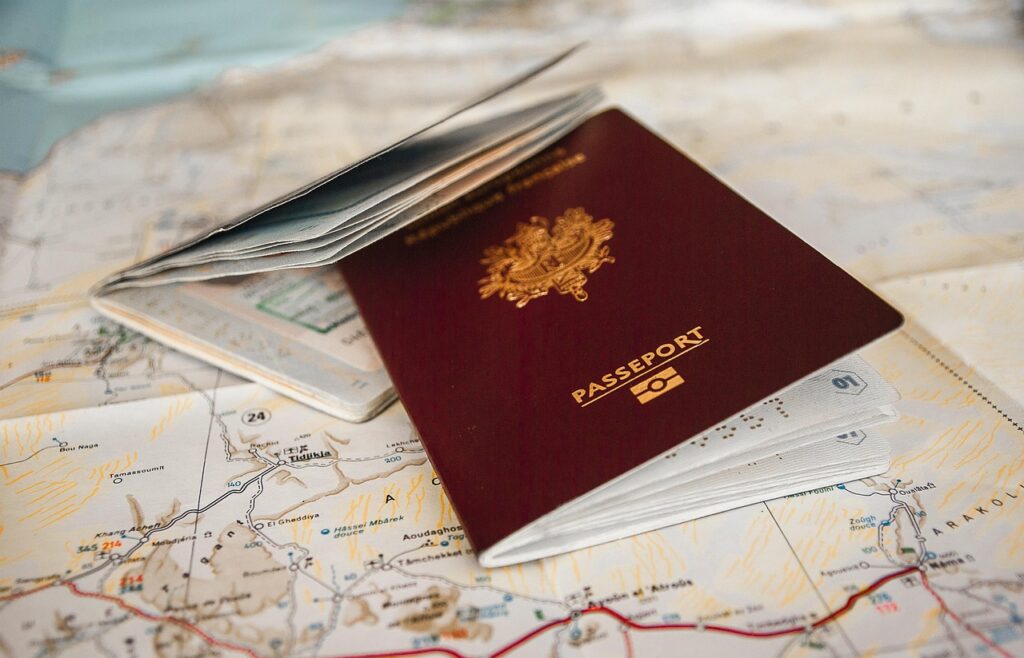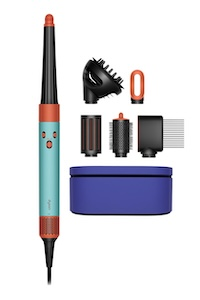
Essential customs rules and
restrictions for entering Denmark
Traveler’s Guide by Parlaxy | Updated: July 23, 2025
Traveling to Denmark in 2025? Whether you’re arriving by car, plane, train, or ferry, here’s what to know about Danish customs to avoid fines, delays, or confiscated goods.
Customs officials monitor what you bring in. Items like alcohol, tobacco, electronics, luxury goods, certain foods, and cultural artifacts may require declaration. Banned goods include drugs, counterfeit items, and products made from protected wildlife.
Main entry points into Denmark include:
- Copenhagen Airport (CPH) – the country’s busiest international hub
- Øresund Bridge – road and rail link from Malmö, Sweden
- Padborg – key land border crossing from Germany
- Rødby and Gedser ferry ports – for arrivals from Germany
- Hirtshals and Frederikshavn – ferry routes from Norway, Iceland, and the Faroe Islands
- Billund Airport – central Denmark’s main airport
In 2025, Denmark has tightened enforcement with increased random checks and advanced digital tracking. Always declare if unsure – Danish customs can fine you on the spot.
For a smooth entry into Denmark, stay informed, declare when necessary, and keep documentation handy!

Read the full traveler’s guide – or better yet, bookmark this page for quick reference later.
It could save you time, money, and hassle when crossing Danish customs.
| Documents Required for Entry | All travelers entering Denmark must present a valid international passport. Citizens of the EU/EEA and Switzerland can enter Denmark using a valid national ID card – no passport required. Danish citizens must carry a valid Danish passport or national ID when traveling abroad and upon return. Visa Requirements for Denmark – 2025 EU/EEA and Swiss citizens: No visa required. Free movement within the Schengen Area applies. Citizens of visa-exempt countries (including the USA, Canada, Australia, Japan): No visa required for short stays up to 90 days within any 180-day period. All other nationalities (e.g., India, China, Nigeria): Must apply for a Schengen short-stay visa (Type C) before travel. This visa allows entry to Denmark and other Schengen countries for tourism, business, or family visits. Always check the latest requirements with the Danish Immigration Service or your nearest Danish embassy or consulate before you travel. |
| Currency Export and Import Restrictions | As of 2022 bringing euros to Russia and Belarus is forbidden |
| Currency Export and Import Limits by Amount | $10,000 Amounts exceeding this must be declared. |
| Restricted Items for Import | If you’re arriving in Denmark from outside the EU, the total value of goods you can bring in duty-free depends on your mode of travel: –By air or sea: Adults can bring non-EU goods (such as souvenirs, electronics, clothing, or perfume) worth up to €430 without paying customs duties or VAT. –By land or private boat: The duty-free allowance is lower – €300 per adult traveler. These limits apply to goods for personal use only. If you exceed them, customs duties and 25% Danish VAT will apply. |
| Prohibited Items for Import | Narcotics and Controlled Substances: All illegal drugs and controlled substances are banned. Counterfeit Goods: Fake products that infringe on intellectual property rights, including clothing, accessories, and electronics, are prohibited. Protected Wildlife Products: Items made from endangered species, such as ivory, certain animal skins, and coral, are not allowed. Weapons and Ammunition: Firearms, explosives, and ammunition require special permits and are generally prohibited without authorization. Certain Food Products: Meat, milk, and products containing these ingredients from non-EU countries are restricted, with few exceptions for items like powdered baby milk or special medical foods. Cultural Artifacts: Importing cultural goods without proper permits or documentation is restricted. |
| Alcohol Import Regulations | Travelers aged 17 and over entering Denmark from outside the EU may bring the following alcohol quantities duty-free for personal use: -1 litre of spirits over 22% alcohol by volume (such as vodka or gin) -2 litres of beverages with up to 22% alcohol by volume (like wine, beer, or liqueurs) -4 litres of still wine -16 litres of beer |
| Alcohol Export Regulations | If you’re taking alcohol out of Denmark for personal use, there are a few key points to keep in mind: Duty and Taxes: When you export alcohol personally (for example, bringing it with you while traveling), you generally don’t pay Danish excise duties or VAT on these goods as long as they are for personal consumption and not for resale. Quantity Limits: While Denmark doesn’t strictly limit how much alcohol you can take with you for personal use when leaving the country, the destination country’s import rules and limits will apply. Be sure to check the customs regulations of the country you’re traveling to, as they may require declarations or impose taxes on large quantities. Transporting Alcohol: Alcohol must be transported in its original packaging and intended strictly for your own use or as gifts within reasonable amounts. Documentation: It’s a good idea to keep receipts or proof of purchase, especially for larger amounts, to show customs officers if asked. |
| Tobacco Product Import Regulations | When entering Denmark from outside the EU, travelers aged 17 and over may bring the following tobacco products duty-free for personal use: -200 cigarettes -100 cigarillos (maximum 3 grams each) -50 cigars -250 grams of smoking tobacco |
| Tobacco Product Export Regulations | Denmark does not impose specific limits on the amount of tobacco products individuals can export for personal use.However, it’s essential to comply with the regulations of the destination country. Each country has its own customs rules regarding the importation of tobacco products, including quantity limits and age restrictions. Therefore, before traveling, ensure you are aware of and adhere to the tobacco import regulations of your destination to avoid any issues at customs. |
| Restrictions on Importing Medications and Dietary Supplements | Prescription medications: You can bring a reasonable amount for personal use. Carry the prescription and keep medicines in their original packaging to avoid issues. Over-the-counter medicines: Allowed for personal use, but should be in original packaging and reasonable quantities. Controlled substances: Some medications containing narcotics or psychotropic substances are strictly regulated. Check before traveling. Dietary supplements: Supplements legally sold in the EU can be brought in for personal use. Non-EU supplements may face extra checks and must comply with Danish regulations. |
| Restrictions on Importing Jewelry and Luxury Goods | When entering Denmark from outside the EU, travelers aged 17 and over may bring jewelry and luxury goods for personal use without paying customs duties or VAT, provided the total value of these goods does not exceed: -DKK 3,250 if arriving by air or sea -DKK 2,250 if arriving by other means These limits apply to the combined value of all goods, including jewelry, watches, designer accessories, and luxury items. If the total value exceeds these thresholds, customs duties and the standard 25% VAT will apply. |
| Restrictions on Exporting Jewelry and Luxury Goods | Denmark does not impose specific restrictions on exporting jewelry and luxury goods for personal use. Travelers are generally permitted to take such items abroad without paying customs duties or VAT, provided they are for personal use and not for resale. |
| Restrictions on Importing Items of Artistic and Historical Value | As of June 28, 2025, new EU regulations aim to protect cultural heritage and combat illicit trade of cultural goods. These rules apply to items coming into Denmark from outside the EU. Categories of Cultural Goods: Category A: Cultural goods unlawfully exported from their country of origin. These are prohibited from import into the EU. Category B: Cultural goods over 250 years old (e.g., archaeological objects, parts of monuments). Importing these requires an import license. Category C: Cultural goods over 200 years old and valued at €18,000 or more (e.g., paintings, sculptures, manuscripts). Importers must submit a self-certification declaring legal export from their origin country. Exceptions: -Items whose country of origin cannot be reliably determined. -Items removed from their country of origin before April 24, 1972. In these cases, evidence must show lawful export from the last country where the item was located for over five years. |
| Restrictions on Exporting Items of Artistic and Historical Value | If you plan to export cultural goods from Denmark for personal use, ensure that you: -Determine the category of the item based on its age and value. -Obtain the required export licence through the TRACES NT portal. -Keep detailed records and documentation proving the lawful export of the goods from their country of origin. |
| Restrictions on Importing Pets | If you’re bringing a dog, cat, or ferret into Denmark, the pet must have a microchip implanted before rabies vaccination. The rabies vaccine must be done at least 21 days before arrival, and a valid vaccination certificate is required. Pets need an EU Pet Passport or an official health certificate proving they meet Denmark’s requirements. The import must be for personal, non-commercial purposes. Some dog breeds, including Pit Bull Terriers, Tosa Inu, and American Staffordshire Terriers, are banned and cannot be imported. Pets may be inspected by customs and veterinary officials on arrival. Start preparations at least 30 days before travel to ensure all rules are met. |
| Restrictions on Exporting Pets | If you’re planning to export a dog, cat, or ferret from Denmark, it’s important to follow both Danish and the destination country’s rules. Pets must be microchipped before rabies vaccination, with the chip complying with international standards. Rabies vaccination should be done at least 21 days before travel, and a valid vaccination certificate is required. An EU Pet Passport or a health certificate issued by a licensed vet must accompany your pet, confirming it meets travel requirements. Check the import rules of the destination country, as additional vaccinations or documents might be needed. It’s best to start the export process at least 30 days before travel to ensure everything is in order. Using a professional pet relocation service can help with paperwork and compliance. Following these steps will help ensure a smooth and compliant export of your pet from Denmark. |
Latest news – customs rules, travel alerts & more
Earn while traveling with Parlaxy
Connect with a shopper and deliver for a fee
Parlaxy Wiki is a customs guide designed for travelers who prepare smartly. We’ve gathered all the latest information by 2025 so that the Parlaxy community has access to up-to-date customs rules and restrictions for different countries, as well as insights into popular destinations and travel tips for exploring various corners of the world. Discover the world with Parlaxy Wiki!
Parlaxy connects those who need to purchase items from another city or country with travelers planning trips to those destinations. Parlaxy is not only a convenient platform where buyers can order products from anywhere in the world and travelers can earn by delivering goods along their travel routes—it’s also a reliable source of current travel information worldwide.
Create an order if you’re shopping, or create a trip if you’re ready to earn while traveling!







